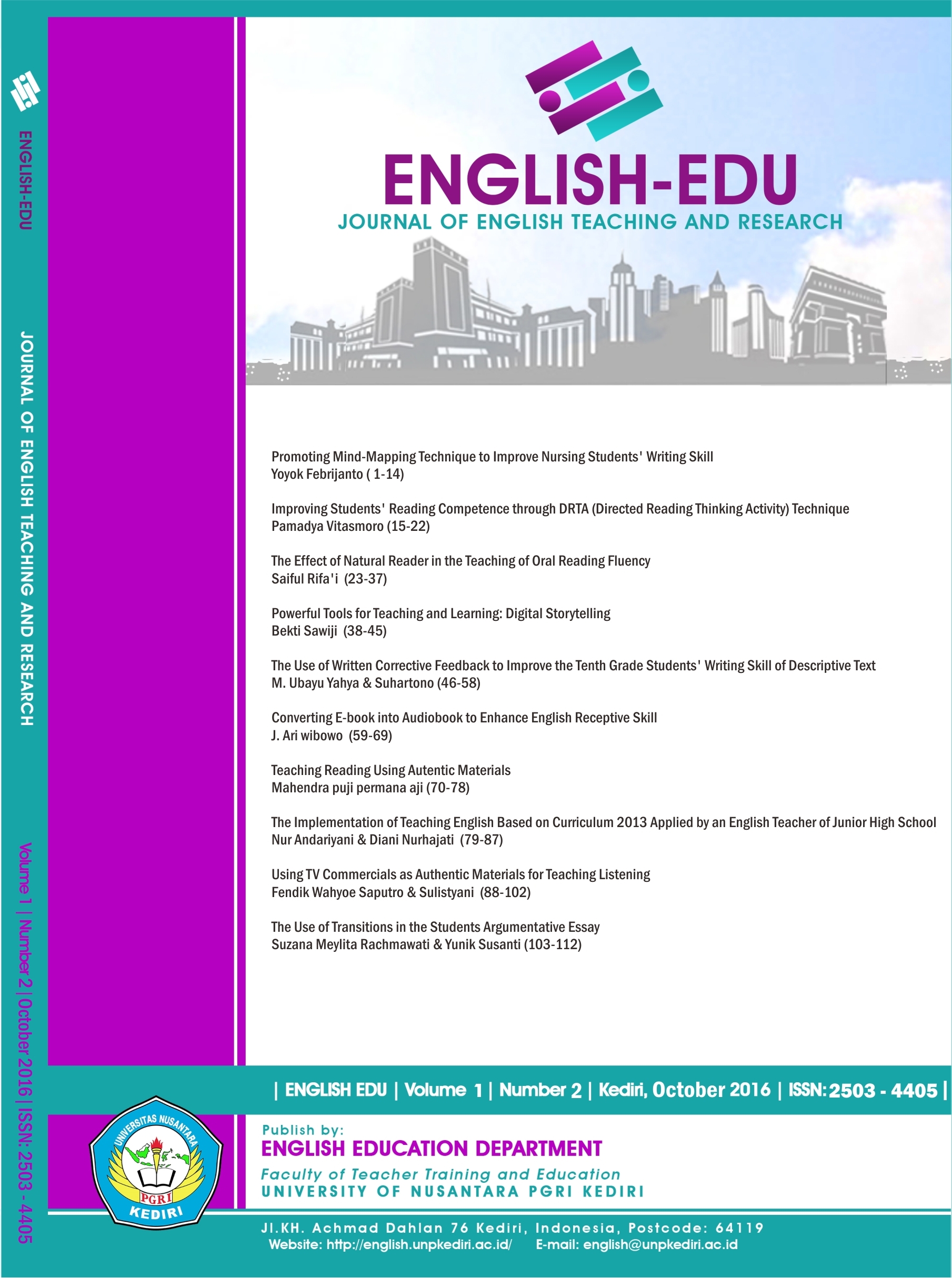TEACHING READING USING AUTENTIC MATERIALS
DOI:
https://doi.org/10.29407/jetar.v1i2.472Abstract
Reading a foreign written text may arise many problems to the students. During teaching learning process, most of the students think that it is difficult to master reading skill because when they discuss about reading a text they usually get bored. The material becomes big problem because the text is too long and it uses difficult vocabularies. Teaching reading can means the activity of language by encouraging skimming, scanning, predicting, and activating schemata. There are three steps of teaching reading, they are pre reading, whilst reading and post reading. In teaching reading there are three process of reading, they are top-down processing, bottom-up processing and interactive reading. Reading material that can be used is authentic material, authentic material is materials written or spoken language that is produced in real communication and not for purpose of language teaching for example newspapers, magazines, TV programs, movies, songs and literature. This is a qualitative research. The data was obtained from observation, interview and documentation. The writer collects the data by preparing the instrument, observing the reading class, interviewing the teacher and collecting written document used. The result of the research shows that the materials used by the teacher to teach reading are articles taken from some foreign magazines and online news from the internet because it contains materials about many things related to real life which would make students interested in reading the text. So it can be concluded that the teaching learning process of reading class runs effectively. The teacher uses steps that make the students understand the materials easily.
Keywords: Authentic material, Reading, Teaching
Downloads
Downloads
Published
Issue
Section
License
Authors who publish with this journal agree to the following terms:
- Copyright on any article is retained by the author(s).
- The author grants the journal, the right of first publication with the work simultaneously licensed under a Creative Commons Attribution License that allows others to share the work with an acknowledgment of the work’s authorship and initial publication in this journal.
- Authors are able to enter into separate, additional contractual arrangements for the non-exclusive distribution of the journal’s published version of the work (e.g., post it to an institutional repository or publish it in a book), with an acknowledgment of its initial publication in this journal.
- Authors are permitted and encouraged to post their work online (e.g., in institutional repositories or on their website) prior to and during the submission process, as it can lead to productive exchanges, as well as earlier and greater citation of published work.
- The article and any associated published material is distributed under the Creative Commons Attribution-ShareAlike 4.0 International License








 Article template
Article template



